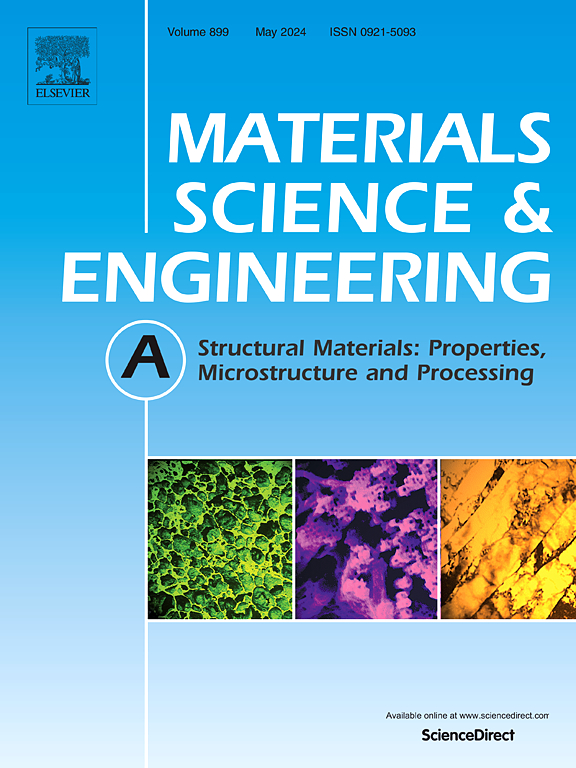Experimental investigation and crystal plasticity modelling of dynamic recrystallisation in dual-phase high entropy alloy during hot deformation
IF 6.1
2区 材料科学
Q1 MATERIALS SCIENCE, MULTIDISCIPLINARY
引用次数: 0
Abstract
During high-temperature processing, the Ni61Fe10Cr10Al17Mo2 high entropy alloy (HEA) often faces issues with uneven stress distribution and grain size, limiting its industrial applications. This study analyzes the dynamic recrystallisation (DRX) behavior and microstructural evolution of this alloy under high-temperature compression between 1100 °C and 1200 °C. High-temperature compression tests at strain rates of 0.2 and 0.7, combined with characterization techniques, reveal that DRX behavior significantly enhances with increasing temperature. The maximum grain size of 30.3 μm was observed at 1200 °C while the maximum DRX fraction of 53.1 was observed at 1150 °C. In the initial stage of deformation, stress concentrates at the grain boundaries and interface boundary and then propagate to the deformation bands with temperature. The BCC phase undergoes continuous dynamic recrystallisation (CDRX), displaying significant differences from the DRX mechanism of the FCC phase, leading to asynchrony between the two phases during DRX. A crystal plasticity model incorporating dislocation density evolution successfully predicts stress softening and microstructural changes during high-temperature deformation. The initiation of DRX is highly temperature-sensitive, and the distinct mechanisms of the FCC and BCC phases jointly influence grain refinement and texture evolution. These findings provide theoretical support for the thermal processing of HEAs and for understanding their internal changes.
求助全文
约1分钟内获得全文
求助全文
来源期刊

Materials Science and Engineering: A
工程技术-材料科学:综合
CiteScore
11.50
自引率
15.60%
发文量
1811
审稿时长
31 days
期刊介绍:
Materials Science and Engineering A provides an international medium for the publication of theoretical and experimental studies related to the load-bearing capacity of materials as influenced by their basic properties, processing history, microstructure and operating environment. Appropriate submissions to Materials Science and Engineering A should include scientific and/or engineering factors which affect the microstructure - strength relationships of materials and report the changes to mechanical behavior.
 求助内容:
求助内容: 应助结果提醒方式:
应助结果提醒方式:


